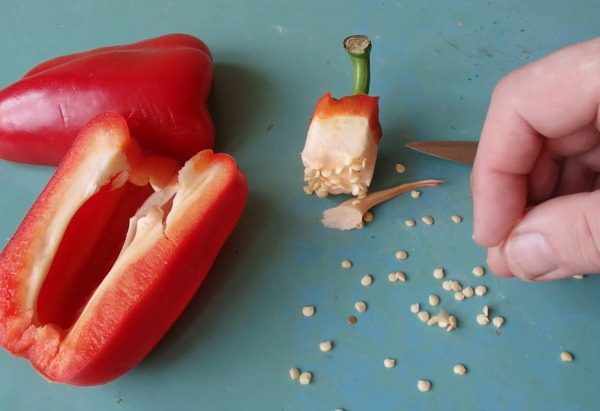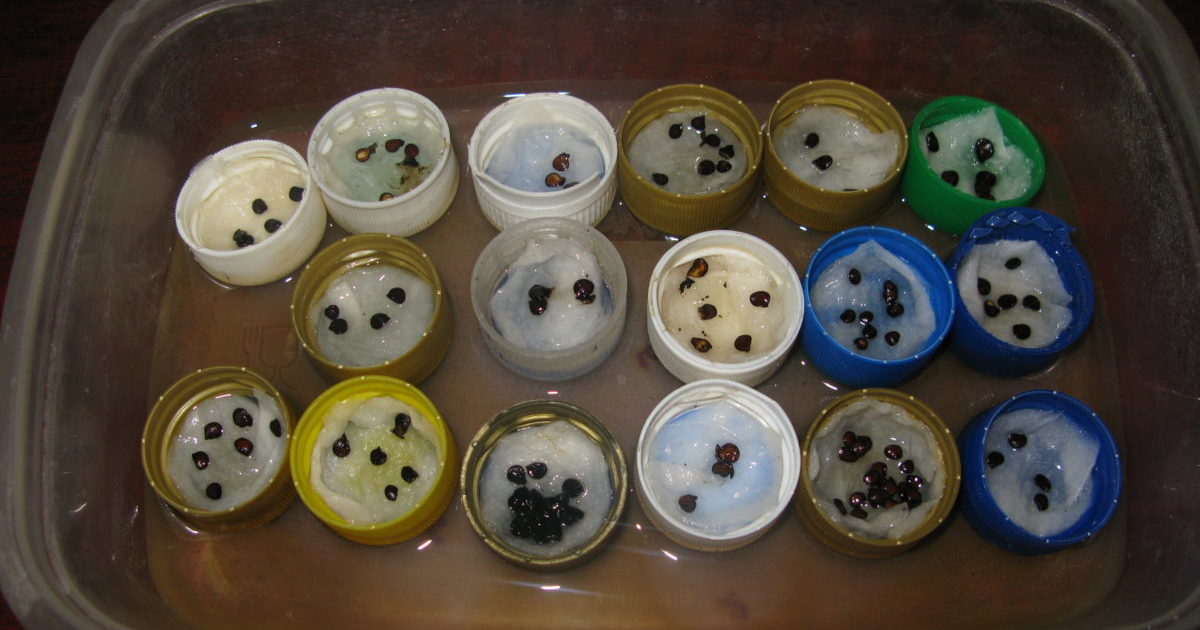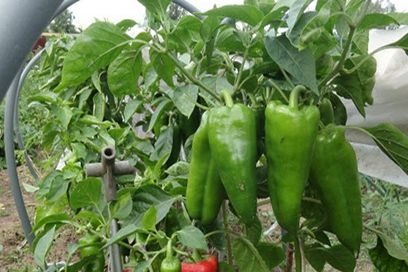You can grow a plant from the seed of a vegetable bought in a store, even with a full crop. Germination can reach 100%, but the result will be unpredictable, since there is no reliable data on the source of seed material. Depending on the region of residence, it is worth buying peppers at a certain time. For example, in areas with a warm climate, this is done at the end of January, February, and in colder ones in February-March.
Features of selection and preparation

For a source of seeds, smooth, ripe and aromatic fruits are suitable. Their seeds are suitable for use, however, to achieve large fruits will not work. They will repeat the parental properties, but to a lesser extent. In addition, the descendant:
- noticeably significant decrease in disease resistance;
- the walls may be thinner;
- not too great utility, for example, reduced levels of vitamins, as well as trace elements;
- there is a difference in shape and color.
For seed preparation gardeners use technology using potato juice:
- Juice is squeezed from one tuber, the size of a chicken egg.
- Seeds are put in liquid for 12 hours.
All about growing peppers from purchased vegetables
From several fruits, you can collect about 80-100 seeds. Initially, the bad ones are selected from the good ones suitable for planting. For this:
- a piece of gauze fabric, folded in half, is placed in a not too deep container;
- moisturize the material;
- spread seeds;
- cover with another gauze cloth;
- the container is placed in a warm place with good lighting, for example, on a windowsill.
Depending on the variety of pepper, the seeds can lie for a long time until the moment of swelling. Periodically inspect the material so as not to miss the time of formation of tiny sprouts. Do this carefully to eliminate their damage. In their absence, the gauze is wetted when it dries.
 You may be interested in:
You may be interested in:As soon as the seeds are pecked they are placed on the seedling boxes. Before planting in open ground pepper is subjected to hardening. To do this, set the boxes with young bushes on the balcony or loggia, but provided that the air temperature is stable within + 12-15C.

Any varieties, even if they are of high quality and grown from good ancestors, need timely fertilizer. When budding begins, they are sprayed with an Epin-extra solution, which will accelerate the ripening of the fruits and increase the yield. Before planting on the bed in the soil make mineral and organic fertilizers.
For transfer to open ground or to a greenhouse, the period from the end of May to the beginning of June is suitable. Landing are done like that.
- Dig a hole in shallow depth.
- The hole is shed with water.
- Bushes are placed.
- Sprinkle with a little earth and slap a little.
It is recommended to transplant the sprouts in the evening when the heat subsided. This will prevent leaf wilt and plant death. The distance between the bushes should be at least 40 cm. The sprouts are very delicate and fragile, and therefore, when handling them, you should be careful.
In dry summers, regular watering is required.Be sure to remove weeds and loosen the soil to saturate it with oxygen. If pests, such as slugs, eating stems and young shoots, are detected, treatment is necessary. In the middle of summer, soil is sprinkled between the beds with ash. This will help to eliminate the re-formation of slugs.
Subject to all the above recommendations, the first fruits in the form of small peppers can be obtained by August. To conduct such an experiment, it is important to correctly germinate the seeds, to select them and not violate the technology of hardening, transplanting, watering.
 You may be interested in:
You may be interested in:Grown peppers may differ from their counterparts precisely in form and juiciness, since the country's climatic conditions are significantly different from the Central Asian and there simply is not enough time for ripening. Therefore, it is recommended to plant vegetables in greenhouses.

 Calorie pepper stuffed with meat and rice - BZHU per 100 grams
Calorie pepper stuffed with meat and rice - BZHU per 100 grams Gorky pepper - the best varieties for open ground
Gorky pepper - the best varieties for open ground Hot pepper seeds - the best varieties for open ground and reviews
Hot pepper seeds - the best varieties for open ground and reviews Capsicum tincture for hair - how to use and reviews
Capsicum tincture for hair - how to use and reviews